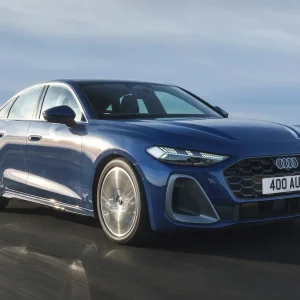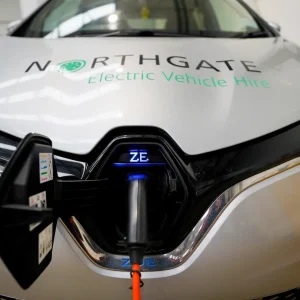Various factors are combining to put the squeeze on the numbers of new vans coming on to the used market, which is good news for fleet sellers, reports Jack Carfrae
It’s no secret that small businesses form the backbone of the used LCV market, so they’re the ones that suffer the effects or reap the fruits of whatever happens come de-fleet time.
Unfortunately for them, they’re currently bearing the brunt of the new market’s hammering during the deepest cuts of the recession in 2008 and 2009, as high prices and severe stock shortages have created something of a seller’s market.
Duncan Ward, BCA’s general manager for commercial vehicles says that in addition to lower sales for the past few years, fleets holding on to their vehicles for longer is also adding to the widespread supply shortage: “Availability is falling because of lower new van sales since 2008 and the trend for larger businesses to hold on to vans for longer. The availability of cheaper good-quality used LCVs will decline in the next few years because of the double whammy of lower new van sales since the recession and large corporate fleets keeping vans in service longer before selling them.”
Prior to the worst of the slump, LCV registrations reached in well excess of 300,000 units annually but they dropped to 260,000 in 2011. That figure actually marks a recovery over 2009 and 2010 levels but, according to Ward, it’s low enough to leave a gap in the marketplace of around 350,000 used vehicles over the next five years.
Tony Grove, LCV manager at fleet management firm Arval, agrees that the market will probably remain flat, but he also believes that the wider economy and Government cuts are likely to have an impact on the size and operation of LCV fleets: “Government cuts are likely to be felt by the public sector this year, with fleet an obvious target for cost savings and a review. More organisations may look to outsource the vehicle fleet as a way of managing and reducing the cost burden.”
Regardless of the stock shortages, Grove maintains that demand will remain high among used buyers whatever happens because the very nature of the LCV market is that vans are an integral part of businesses: “Buyers of new vans in the corporate and public sectors can sometimes hold off replacing, or growing, their fleet when times are tight, but the used van buyer doesn’t always have that option – if their van is beyond repair then they have to replace it or they don’t have a business, so that keeps demand up in the used market.”
Winter warmer
Seasonal factors have quite a different effect on the used van market compared to second-hand cars. The traditional end-of-year slowdown for cars does not apply to LCVs because businesses tool-up for increased deliveries over Christmas, as Ward explains: “There are some seasonal elements affecting the used LCV marketplace, notably interest rises in delivery vans and fridge and freezer vans in the run up to Christmas. With the continued move from traditional high-street shopping to online purchasing for everything from groceries to luxury goods that is a trend that is likely to continue.”
Conversely to the used car market, Ward says that BCA usually experiences high demand for used LCVs at the beginning of the year, which generally remains until Easter, itself a watershed for price and performance. That said, the last four months of 2011 were the best for BCA’s used van sales, which also tallies with Grove’s comments: “Generally, LCVs are not as strong as cars in the first quarter of the year but tend to be stronger in the fourth quarter.” Grove points out that LCV registrations are more evenly spread throughout the year than those of new cars and that the same spikes do not apply when new registration plates become available.
As fleets hold on to their vans for longer, the average age of models coming to market is on the increase. As a result, older, higher-mileage vehicles have been gaining ground in the auction halls and are now selling well with strong values. Small businesses and sole traders are particularly keen because of their lower prices and greater availability, as Ward explains: “Older, higher mileage vans, such as those typically from dealer part-exchange sources, have been selling strongly because they are priced at an attractive level. In fact, prices were very strong across the board at the end of the year.”
One of the factors working against vans over a certain age is the London Low Emission Zone, which rules out LCVs more than 10 years old if they are to be used within the capital, as Grove explains: “For fleets looking to effectively manage costs, a TCO [total cost of ownership] approach is essential. This means that while the upfront costs of an older van may seem attractive, the longer-term costs of operating that vehicle are often higher than a newer model.”
Ward says that buyers in southern areas are keen to ensure that their vehicles are LEZ compliant, and that second-hand LCVs that qualify for the scheme are in high demand: “BCA has seen plenty of interest from southern-based buyers seeking to upgrade older pre-Euro3 LCVs to LEZ-compliant vehicles. Most of the activity is focussed on low-cost replacement vehicles, particularly larger panel vans that comply with the new rules that came into force on 3 January 2012.”
In addition to the popularity of older vans, the LCV sector has also mirrored the car market in terms of downsizing. That might sound counter-productive in a sector that relies on large vehicles as tools of the trade, but it seems that fleet managers are looking realistically at their ability to reduce costs with the vehicles they choose. “Small and medium panel vans are proving popular,” Grove points out. “With a lot of fleet focus on cost management, it is not surprising that some fleets are turning to more economical models, which often deliver relatively low emissions and strong mpg performance.”
Nigel Fletcher, deputy managing director at leasing firm ALD Automotive, agrees, saying: “The high performers are typically car-derived vans such as Astra vans. Transit vans with a lower wheelbase are also proving popular. Also, smaller vans with a side-loading door are also in demand.”
Grove warns that vehicles need to be fit for purpose, as despite the heavy emphasis on running costs, fleets can overdo it and end up with a van that is either too small or not powerful enough for the job: “While running costs are an important consideration, which in some cases means vehicle downsizing, operators must consider the most appropriate size of vehicle for the job. For example, a small van carrying a disproportionately heavy load on a regular basis can become very inefficient compared to something that is larger but fit for purpose.”
Vendors have been criticised in the past for failing to bring used LCVs to market in an acceptable condition, putting them into auction dirty, damaged and generally tatty, which inevitably impacts on values even in a seller’s market. Ward claims that this creates a “two-tier market”, as vehicles in good condition become even more desirable and those that are sold with damage risk being overlooked completely.
He continues: “Far too many vehicles are entering the remarketing chain with increasingly high levels of damage. More often than not we see vans being sold where damage obviously occurred some time ago and has not been addressed by the vehicle owner or operator. It has deteriorated over time, rust has set in and economical Smart repair techniques cannot be used. A small area of damage that might potentially cost tens of pounds to put right when it first occurred becomes a major repair costing hundreds of pounds some months later.”
Advances in online remarketing (ease of use, decreased travel costs, more pictures of stock etc) mean that professional buyers are no longer fearful of purchasing over the internet and website bidding continues to grow. Fletcher says: “LCV remarketing can expect to follow same path as cars and embrace online sales channels. There is a growing confidence among consumers to purchase vans that they don’t specifically have to touch due to the wealth of information/images available online.”
Light commercial vehicles sold via BCA’s live online channel accounted for a quarter of all LCV sales in 2011, an increase of 5% on 2010 and 20% on 2009. Though it seems that internet remarketing is stabilising and becoming accepted across the board, it is still likely to increase and account for a larger slice of used LCV sales in future.
Ward explains that the firm now has a number of customers that buy used LCVs exclusively online and that such numbers are expected to continue: “We have some buyers who buy almost exclusively online, particularly when they are searching for more specialist commercial vehicles. If current levels of online activity are maintained, the number of LCVs sold online at BCA could well represent a third of the total volume this year.”
The firm reported that double-cab pick-ups were the most popular online LCV purchase throughout 2011, as over a third were sold through online channels, while minibuses, Lutons and station wagons also proved popular with internet buyers.





